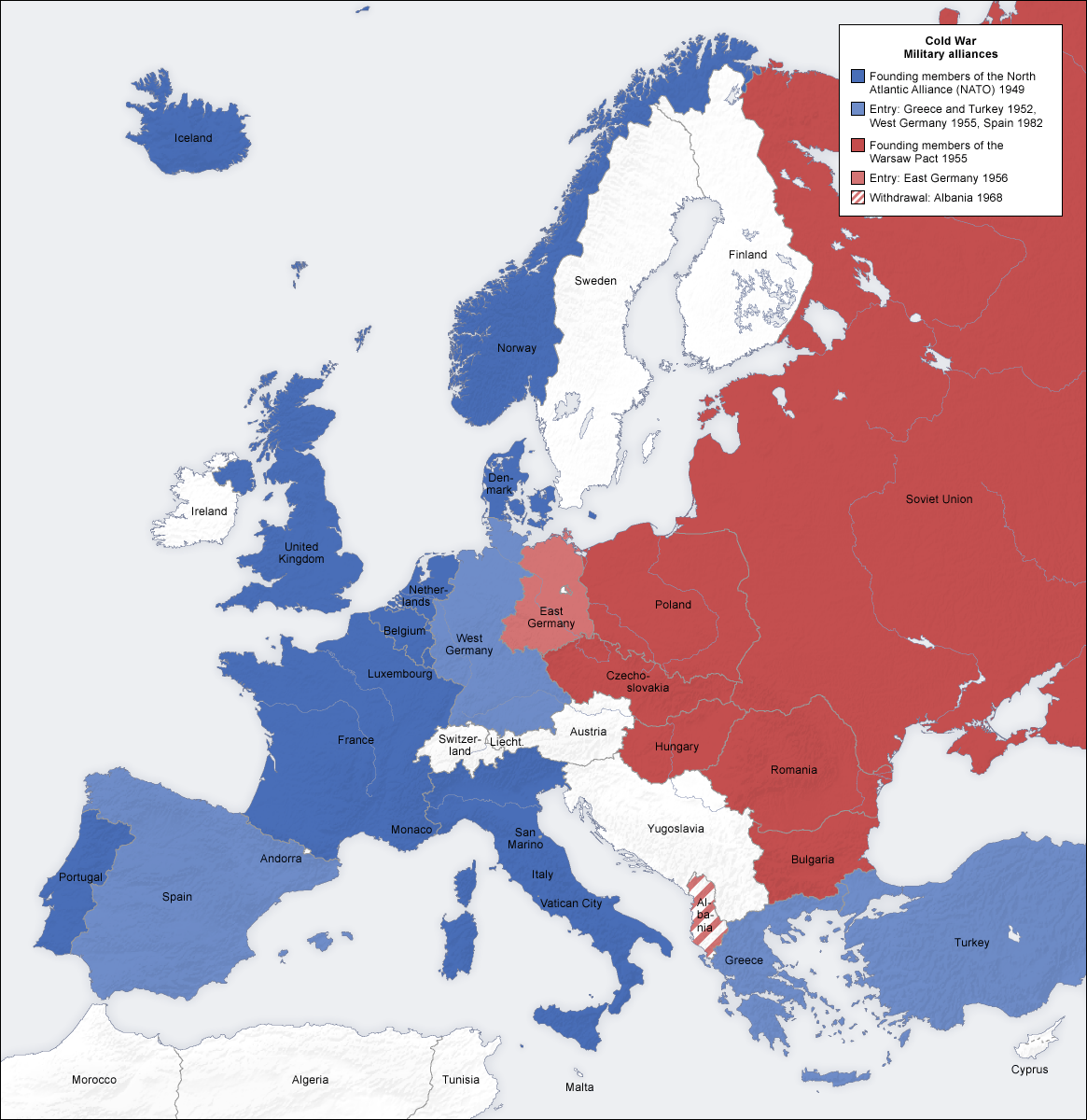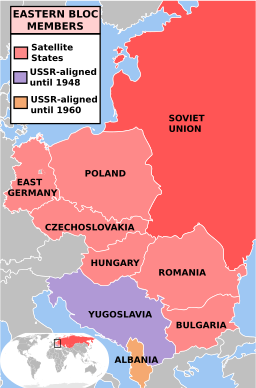18.1: World War II and its Aftermath
- Page ID
- 132607
World War Two in Europe was nearly over when Joseph Stalin (Russia), Franklin D. Roosevelt (United States), and Winston Churchill (Great Britain) met at Yalta in February 1945, but the war in the Pacific was still ongoing. This fact weighed heavily on the British and Americans, who were hoping for Soviet help in defeating Japan. Stalin had signed a Non-Aggression Pact with the Japanese in 1941, which both sides maintained during the conflict.
At Yalta, Stalin pledged to declare war on Japan three months after the German surrender. In exchange, Roosevelt and Churchill essentially agreed to the Soviet military occupation of Eastern Europe. After World War II was over, this agreement would bring about the beginning of the Cold War between the U.S. and the Soviet Union. The conflict was not be fought directly between the two superpowers, but rather through proxy wars in the developing world over most of the next five decades.

The United States and the Soviet Union had been allies in World War II. After the war ended, things changed. In 1946, the head of the U.S. embassy in Moscow, George Kennan argued that Russian imperialism had not ended with the Russian empire and under the Soviets would advance under what he called the “new guise of international Marxism”. (The U.S.S.R. was being ruled not as a communist democracy but as a totalitarian dictatorship under Josef Stalin.) Marx’s ideal of a “dictatorship of the proletariat”, where workers would live together in such harmony that police and armies would be unnecessary, never arrived for the Russian people.
Kennan went on to state that there could be no cooperation between the United States and the Soviet Union. Instead, the Soviets had to be “contained.” As the Russians had advanced toward Germany in the final years of World War II, they had not only retaken Russian territory but had held onto the lands Stalin had conquered when he was Hitler’s ally and expanded their control over Eastern Europe.
Despite promised democratic elections, by 1949 the Soviets had set up one-party communist states mirroring their own in Poland, Czechoslovakia, Hungary, Romania, and Bulgaria. Stalin’s desire to dominate eastern Europe as a buffer zone against attacks from the West was understandable, given the history of European wars and the tremendous sacrifices of blood and treasure by the Soviets during the war that had just ended.
In 1946, former Prime Minister Winston Churchill visited President Harry Truman in his home state of Missouri and made a speech at Westminster College. Churchill said the situation in Europe felt as if Stalin had dropped an “iron curtain” separating East from West. It was an apt description: neither the Soviets nor the new communist regimes permitted free travel between the two sides. Indeed, Germany itself had been divided: the western portion uniting into a federal republic, the Bundesrepublik Deutschland (GDR), complete with elections and multiple political parties. At the same time, East Germany became the Deutsche Demokratische Republik (DDR), a one-party communist satellite state of the Soviet Union.

The "Iron Curtain" of Eastern Europe.
When World War II ended, the conflict between communist and non-communist anti-Nazi partisans turned into a full-blown civil war. However, Greece was outside of Stalin’s sphere of influence. The British and Americans began supporting the beleaguered parliamentary monarchy against the communists, who were defeated in 1947. The conflict in Greece showcased the new “Truman Doctrine” of containment, under which the U.S. was willing to concede to Soviet domination of Eastern Europe, but would “contain” the spread of communist regimes in any other country. It's this policy of containment that would be utilized for the next 50 years.

